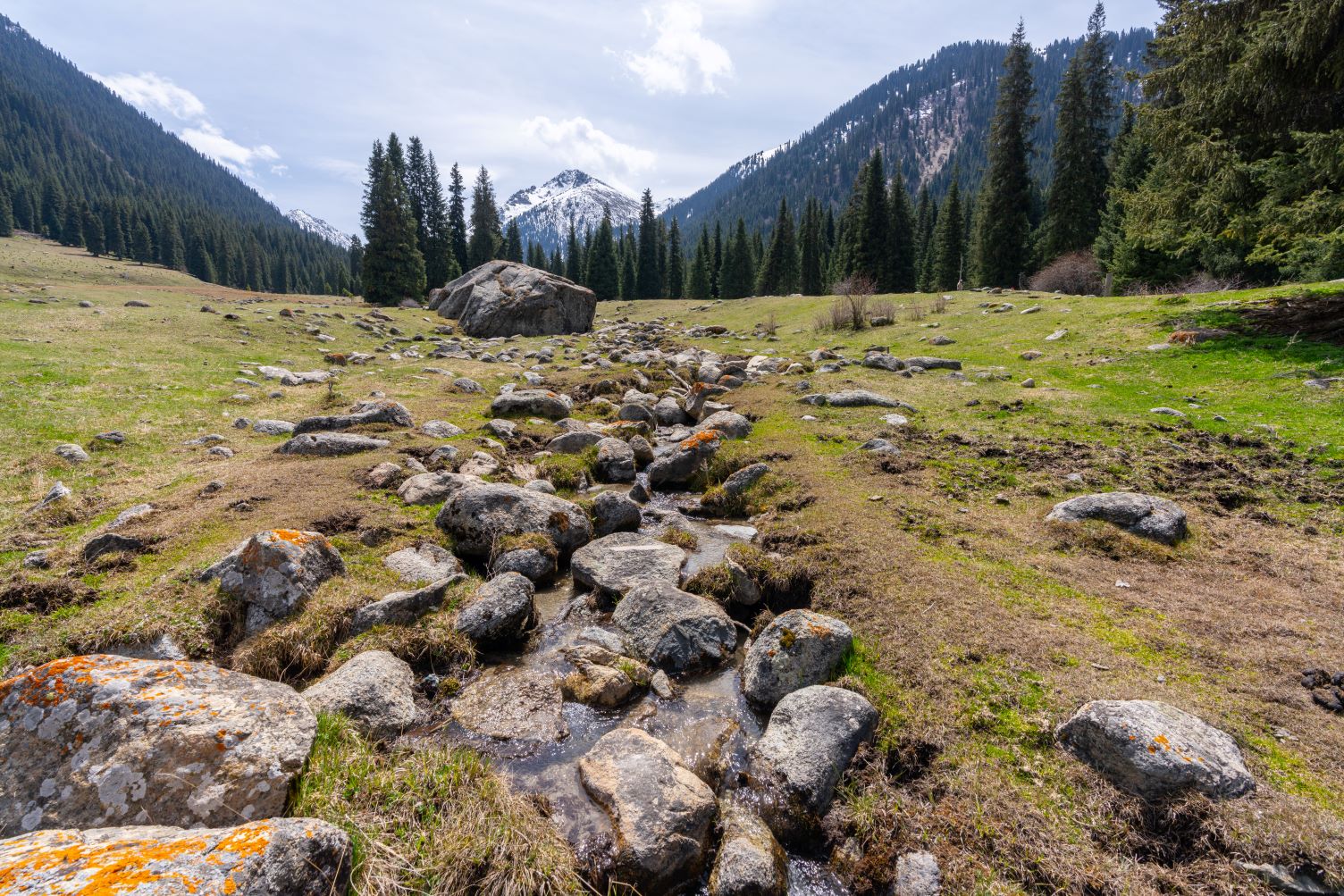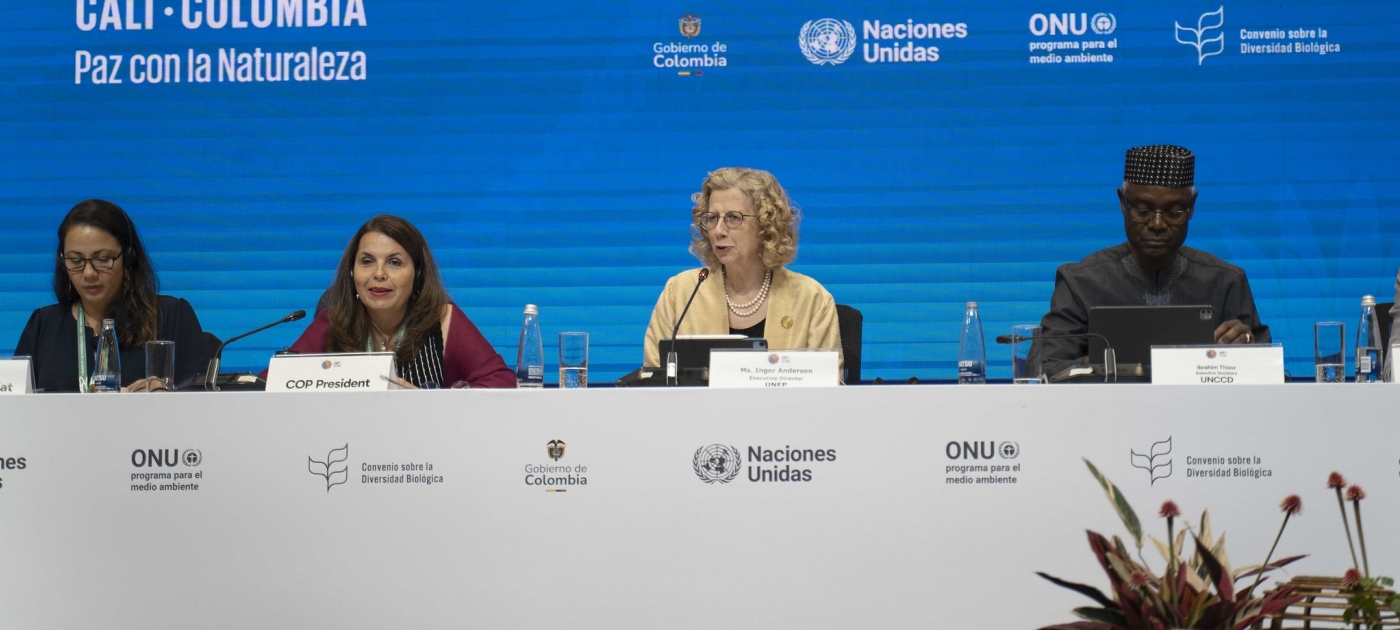Kyrgyz Republic on Thursday announced a new ecological corridor of around 800,000 hectares, or 8,000 km², in a landmark move for biodiversity.
The corridor is set to link up existing conservation areas and complete a protected area spanning a total of over 1,2 million hectares
The UN Environment Programme (UNEP) supported the Kyrgyz government by providing ecological modelling to help define the corridor’s borders.
The area will connect the Khan-Tengri National Park and Naryn Nature Reserve, passing through several other conservation areas along the way.
The corridor aims to safeguard migration and dispersal routes for key mountain wildlife species under pressure from changing habitat conditions due to overgrazing and climate change.
The species include snow leopards, which are listed as Vulnerable on the IUCN Red List of Threatened Species, and its prey species, such as the Asiatic ibex and the argali sheep.
Features of The Ecological Corridor
This ecological corridor is the biggest to be created under the Kyrgyz Republic’s Law on Specially Protected Natural Areas.
Ecological corridors balance conservation goals with sustainable land use. While they are legally part of the protected area system, the corridors allow activities like seasonal grazing with some limitations, ecotourism, and reforestation, provided they do not harm biodiversity or disrupt ecological processes such as wildlife migration.
Previously, over 65,000 sheep grazed in the corridor area during summer months.
With the corridor’s introduction, grazing planning and the rotation of livestock herds will be adapted to reduce this figure by 15,000, leaving mountain pastures more time to recover and providing grazing opportunities for wildlife.
The redistribution process, coordinated with local herders and community leaders, aims to protect livelihoods while environmental goals are met.
According to UNEP Europe Office Director, Arnold Kreilhuber.“The establishment of this corridor marks a major milestone in conservation for Central Asia and can serve as a model for the region,”
“By creating a network of connected landscapes, the Kyrgyz Republic is leading the way in preserving not only iconic species like the snow leopard, but also safeguarding the nature that people’s livelihoods depend on.” He said.
“This is a collaborative effort to conserve our ecosystems without excluding the people who rely on them , there are no permanent settlements within the corridor, and we’ve worked closely with herders to ensure fair access to alternative pastureland.”,” said Mirslav Amankulov, Deputy Minister of Natural Resources, Environment and Technical Supervision of the Kyrgyz Republic.
Reasons For The Ecological Corridor
The corridor was established following a modelling study conducted by Humboldt University in Berlin and the National Academy of Sciences of the Kyrgyz Republic under a UNEP-led project.
The modeled ecological corridor outlines were presented at community roundtables and received unanimous support from local authorities and scientific institutions.
Looking ahead, the country plans to integrate ecological corridors into other sectoral planning and policy such as national pasture development plans and hunting regulations – to support biodiversity conservation.
Monitoring systems, including biomass assessments, will help to oversee pasture use and track ecological health.
According to Officer in Charge for UNEP’s Biodiversity and Land Branch, Ecosystems Division, Johan Robinson, “Ecological corridors are a crucial way to ensure that, despite the changing climate, ecosystems can continue to provide essential services that people and nature rely on — from clean water and fertile soils to climate resilience and room for migration,”
“The Kyrgyz Republic is choosing a more sustainable future for both nature and communities”. He said.
To enhance climate-smart conservation in Central Asia, the possibility of establishing transboundary ecological corridors extending beyond the Kyrgyz Republic is being considered.
This announcement coincides with the International Day of Biodiversity on May 22, highlighting the Kyrgyz Republic’s commitment to global efforts in preserving the planet’s natural heritage.
Support for the ecological corridor was provided through the UNEP-led ‘Central Asian Mammals and Climate Adaptation’ (CAMCA) project, funded by the International Climate Initiative of the German government, in collaboration with the Convention on Migratory Species (CMS), WWF USA, and two Kyrgyz NGO’s, CAMP Alatoo and Ilbirs Foundation.
The project aims to enhance the conservation of flagship migratory mammal species of Central Asia through climate change-informed management and decision-making.
About The UN Environment Programme
The UN Environment Programme is the leading global voice on the environment. It provides leadership and encourages partnership in caring for the environment by inspiring, informing and enabling nations and peoples to improve their quality of life without compromising that of future generations.




